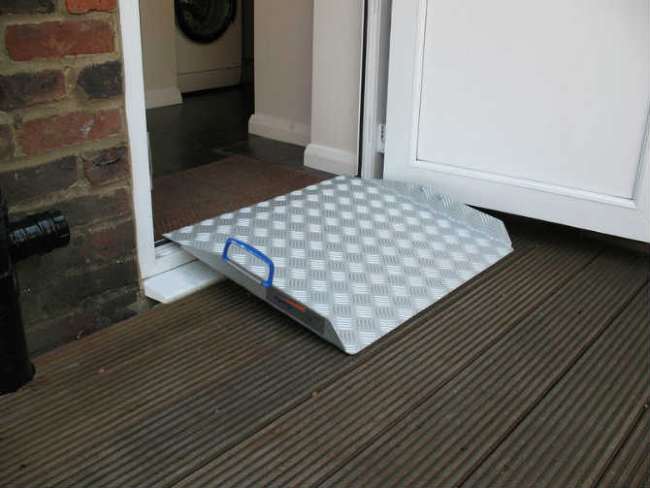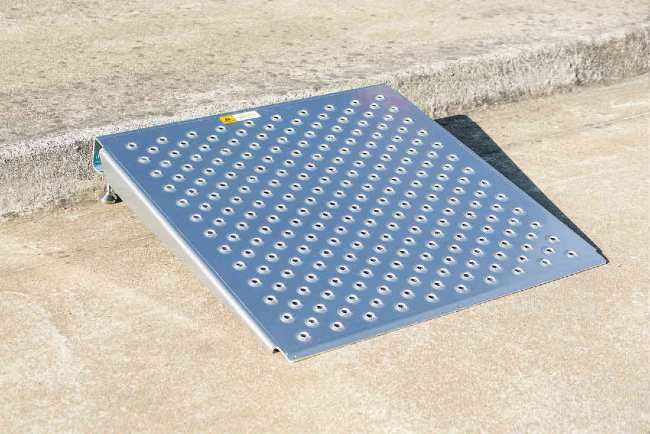We’ve become more aware of some of the struggles wheelchair users face as of fairly recently. While wheelchairs have been around for a while, the general public was simply not aware of the issues surrounding wheelchair accessibility. And these issues are all across the board – it all starts with the home, but then extends to shops, offices and anything in between. While you can certainly take a few steps to adjust your residence to be accessible with a wheelchair, public spaces can be little tricky. Fortunately, retailers and leisure centers have understood the benefits of making their space accessible for everyone – making everyone feel welcome and included, thus becoming a potential customer. If you want to go ahead and do the same, check out the following tips.

Get a Ramp
The obvious first step is making your doors accessible. If your entrance is not welcoming to all customers, you will lose a fair-sized portion of them. But it doesn’t stop there. Ideally, you should have all of the indoor areas accessible via a ramp. Sometimes, however, this is simply not possible and in such cases you can dedicate a part of your space for wheelchair use. It’s not the perfect solution, but it will solve some of the issues the way designating smoking and non-smoking sections in restaurants and other public spaces partially satisfied everyone involved.
Setting up a ramp has its challenges. Connecting two different levels seems fairly straightforward, but what is the steepest a wheelchair ramp can be? As a general rule, you can have a slope of up to 5 degree angle for hand propelled wheelchairs. Power chairs, on the other hand, tolerate a slope of up to 7 degrees. It’s best to have the ramp as wide as possible, but you will have to adjust to the space available to you.
Consider going for an adjustable aluminium threshold ramp if you want a portable, removable solution. They make them with stainless steel legs these days, and you can set them on uneven terrain as well. Outdoor ramps come with punch plate surface to ensure safe operation in all weather. Some even use them indoors. If you find metal inconvenient you can opt for a rubber wheelchair threshold ramp. It withstands the wear from the elements, has non-slip properties and it’s fit for both residential and commercial use.
Lower the Counter
Having a low payment terminal can be very handy in terms of allowing wheelchair users to inquire or process payments like everyone else. Alternatively, you can have a separate low counter, which will be useful for any customers that want to sit down. A lower, more accessible counter goes beyond this – it applies to reception areas of all sorts. Facing a high reception desk in a hotel can be unpleasant for everyone involved. Make sure you have this covered because it’s one of the first thing customer notice once they enter your premises.
You can extend this concept to the seating areas as well. If you operate a cafe, or manage an office space, having traditional tables and chairs that aren’t high will make meetings, dining or working more friendly and engaging.

Highly Visible Signage
Have clear indicators so visitors can effectively use your premises. This not only increases safety in case of an emergency, but it plays a role in disability access, especially since maneuvering a wheelchair can be tricky in tight spaces. If possible, allow plenty of space to do just that and post clear signs so customers can easily locate the restrooms, exits and other info that is relevant (product info on a particular aisle, for example).
Depending on the type of visitors you get your space can be further adjusted with Braille signs, water bowls for service animals, or any similar adjustment along those lines. B thoughtful about the needs of your customers can go a long way in making everyone feel welcome and included.
Eliminate Hazards
This one is common sense, but in terms of accessibility you might need to shift your perspective. For example, using a certain type of flooring can make your space more accessible for wheelchair users. You can go for vinyl, lino or some non-slip surface. Eliminating hazards goes beyond your ramp and floor. Cables that run across an office or a hall are usually not considered a hazard if they are tucked away under the carpet or protected with some sort of a sheath. Wheelchair users may find climbing up and down these contraptions an unnecessary burden. You can certainly be more thoughtful and not just keep utility lines away from sight, but also out of the way. One option is to attach them to walls, but you can find other alternatives as well.
Having plants in indoor spaces creates more relaxed and natural ambiance. Same goes for having a well taken care of landscaping or outdoor garden. If you do have any of those make sure they are maintained on a regular basis. This will be aesthetically more pleasing. If the plant holders are in the way, get rid of them or find an alternative solution. Aisles, corridors, and any other space where wheelchairs are expected to maneuver should be free of obstacles. You can also look for someone who can rate the disability access of your facility– and they might have an extra suggestion or two. Even if you’ve made a step toward making your space wheelchair accessible, there are still ways to improve. And sometimes, you can’t design the space for others without their input, so you can look into that as well.
























